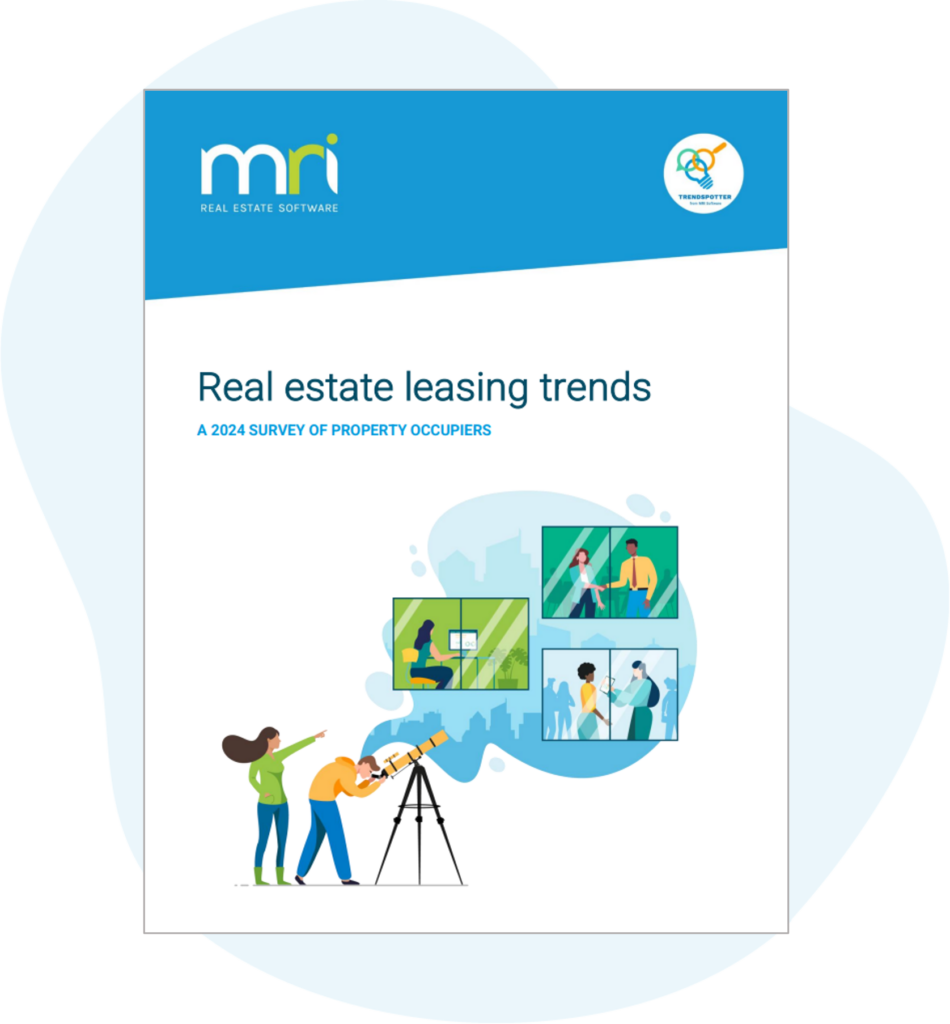Leveraging facilities management software to reopen commercial properties
2021 has started with more uncertainty than many had hoped for despite the development of multiple COVID-19 vaccines. The spread of new, more transmissible variants of the coronavirus has left many who were looking forward to a return to the office now facing further doubts and fresh restrictions aimed at controlling the pandemic while the new vaccines are rolled out. Indeed, it will still be months before we see a return to something even resembling the “old normal.” For a facilities manager in charge of building maintenance and ensuring staff and tenant safety, that means making ongoing adjustments for both sites that must remain open and those that plan to reopen as circumstances improve.
As the situation continues to evolve, commercial property operators need to re-evaluate the way they carry out day-to-day operations to ensure everyone is safe and healthy – and technology can play a crucial role in meeting new challenges. Given the ongoing necessity of social distancing, facilities managers need to continue to provide updates on health and safety procedures and communicate what steps are being taken to protect everyone working or visiting a workspace. These include deep cleaning processes, building security measures and efforts to minimize physical proximity.
It has become clear that, as restrictions change and the COVID situation continues to shift, effective facilities management in the commercial sector will be vitally important. It becomes critical not just in providing safe working environments for those who must venture back to offices and other workspaces, but in instilling confidence that everyone onsite is safe. Indeed, the task of managing facilities maintenance (FM) will become more complex and increasingly important to efforts aimed at a safe return to normality in the long run.
Managing the workplace as restrictions ease
When more people begin returning to offices, facilities managers will shoulder an important responsibility. They need to ensure any and all new requirements are being met during any transition period in the coming months when people may feel safer returning to buildings, but there are still concerns about the spread of the virus. The need to work with occupiers to make certain the workplace offers an environment that meets all safety standards and guidelines – such as one-way systems or desk placements.
Indeed, we will likely see numerous examples of how organizations will need to rethink and repurpose their use of space, both to meet interim requirements and in fact, on a permanent basis in many cases. This could include areas that are isolated or “out of bounds” for specific individuals or groups – or may even stretch to areas for testing facilities. What’s more, many FM departments and workplace managers will be tasked with completely reimagining their organization’s use and utilization of real estate given shifts in working patterns and increased numbers of remote employees.
Technology will play a critical role in handling the changing nature of work. Paper-based, manual methods are not robust or reliable enough to manage this evolving situation. They cannot be relied on to guide well-informed, strategic decision-making which is required.
Digitalizing the facilities management process
The need to plan spaces more effectively means facilities managers have to rely on complete and accurate information – and have the right solutions in place to visualize and manage their space and related workplace data – so they can take all necessary steps. To properly address these challenges, space management solutions that offer visibility of room layouts, seating configurations and calendar bookings in one place will help ensure that locations are utilized in the best and safest way. Through software, actions or assets can be assigned to users, and can all be tracked on the system, while requests, assignments and approvals can be applied and automated. In what has the potential to be a confusing and sensitive time for stakeholders, this clear communication will be vital.
Furthermore, building security and safety will continue to be a significant issue as conditions change in the coming months. There is a growing need for facilities managers to look at how to streamline visitor management and lobby traffic. Knowing the who, when and where of everyone in a commercial property – whether visitors, contractors, tenants, or FM staff themselves – will be more important than ever in ensuring the safe operation of facilities and complying with any government track and trace requirements.
Facilities managers can utilize technology that allows the capture and analysis of real-time data on new working patterns and visitor activity to ensure commercial properties’ smooth running. For instance, visitor management solutions that offer an intuitive interface to quickly check in staff and register visitors will be critical to ensuring the overall safety for everyone, while efficiently managing the process.
Employing technology that ensures effective measures are in place and enables organizations to communicate that to all staff will be important in inspiring confidence and assuring those returning to work that their health and safety are being protected.
Opening clear lines of communication
The COVID-19 pandemic emphasized the importance of communication across estates and property teams today. Corporate occupiers and building staff alike need information on everything from social distancing and cleaning, to procedures for maintenance and contractors, to visitor management and where to enter/exit. Tenants, employees and customers, as well as FM teams and contractors, need to be made aware of all new rules, restrictions and actions taken in every physical working space, and digital solutions are a quick way to communicate up-to-date information to ensure safety.
Utilizing online portals, for instance, not only enables facilities management teams to maintain clear and consistent lines of communications, but they also provide a straightforward, agile way to handle day-to-day queries, as well as urgent issues – particularly those raised by COVID-19. Issues that might have previously been considered non-urgent could suddenly become critical in the context of maintaining a COVID-secure environment. FM teams will want to rely on their software’s flexibility to track and monitor new and ongoing issues.
Workplace communications have already taken on a new level of importance, and this will continue as new requirements develop. For example, FM managers will need to have digital tools for ensuring that engineers and contractors have all the information they need. They will also need to run an effective multi-discipline helpdesk to deal with reactive jobs and manage COVID related issues. Facilities managers will likely need to have procedures in place, for instance, if a COVID case is reported at their location. With an appropriate FM system, they could have built-in workflows of the steps needed to manage and respond to such an incident.
The pandemic and its fallout also continue to impact how teams communicate and execute planned work. For example, suppose there are simultaneous jobs at a building. In that case, measures might need to be taken to prevent separate teams or engineers from being in a building together and to allow for cleaning to occur between their visits.
Boosting efficiency and agility through FM technology
The impact of the coronavirus crisis on facilities management will reverberate for some time, even once the rollout of vaccines signals that it is safer to return to workspaces. Facilities managers were already facing mounting pressure to provide better customer service than ever while also cutting costs, and that will continue as people filter back into workplaces.
Everyone coming into offices and other workspaces today has high expectations on the use of digital technology to live, work and play. Investing in the right digital solutions not only improves the working and customer experience but boosts efficiency by optimizing the use of staff and time needed to deal with tenant issues – leading to savings.
COVID-19 has drastically accelerated technology adoption and, as the remit of facilities managers continues to broaden, going digital will be an essential component for commercial properties looking to optimize facilities management and ensure the safety of all involved.
Leading solutions for property occupiers, owners and service providers & contractors.Facilities Management software

CoreNet 2024 Global Leasing Trends Report
MRI Software partnered with CoreNet Global to uncover 2024 real estate occupier leasing trends and provide critical insights to guide you through the current and future state of CRE leasing. Building on previous surveys, the report analyses data from…
